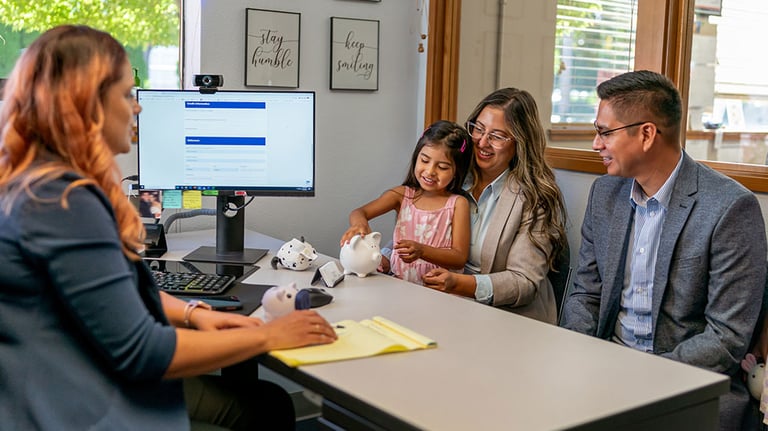Financial Literacy for Kids—8 Ways to Get Started
Teaching Kids About Money—Smart Spending, Starting A Savings Plan, And More


As parents, guardians, or educators, we all want the best for our children, and that includes setting them up for financial success. In a world where financial literacy is an invaluable skill, empowering children with a solid foundation early is crucial.
Teaching kids about money can help instill valuable habits that last forever. Read on for our top tips on helping kids develop financial literacy and navigate the world of money more responsibly.

Start early
Children as young as three can begin to grasp basic finance concepts. Introduce the idea of money through games, such as playing “store” with fake money. Or, use real-life examples during daily activities, like counting coins when grocery shopping. Early exposure to basic finance and the concept of money can help lay the foundation for understanding the value of money as they get older.
Teach budgeting through an allowance
Giving kids an allowance is actually an effective way to teach them about budgeting. Help them allocate funds for spending, saving, and sharing, as the hands-on experience can help instill the importance of prioritizing needs and wants, plus the value of saving.
You can also introduce the idea of earning money through chores or age-appropriate tasks to help impart a strong work ethic and to teach that money is earned through effort and dedication.
Set savings goals
Encourage kids to set savings goals for things they want, whether it’s a new toy or gadget or even a future vacation. This helps teach the concept of delayed gratification and the power of saving over time. It may be helpful to use visual aids like a savings jar so the process is more fun and tangible.

Open a savings account
Take a trip to the bank to open a child savings account. This easy and practical step can help them understand the banking system, introduce the concept of interest, and emphasize the importance of saving money in a secure place. Most banks offer special savings accounts for children, which provide even more opportunity for hands-on learning. Take advantage of any activities or financial education the bank offers.
Teach smart spending
In a world of advertising and social media, it’s important to help kids develop good spending habits. Discuss the difference between needs and wants and the importance of making informed money decisions. If age appropriate, you can also share the value of comparison shopping, using coupons, and finding the best deals.
Encourage entrepreneurial thinking
Foster both creativity and entrepreneurial thinking by encouraging kids to explore ways to earn money beyond traditional chores. Ideas include mowing lawns, babysitting, pet sitting, selling homemade crafts, or other age-appropriate “businesses.” This experience can help foster a sense of initiative and resourcefulness while reinforcing the concept of working and getting paid.

Explain financial mistakes and consequences
Nobody is perfect with money and it’s important that children understand making mistakes is a natural part of financial growth. But it’s also important to share how some money mistakes can lead to serious consequences. Talk about some common financial pitfalls and the possible outcomes, so they can learn from their mistakes and know what to avoid.
Lead by example
One of the best ways to help your child understand financial literacy and the value of money is to lead by example. Children often learn by observing adults around them, so demonstrate responsible financial behavior by budgeting, saving, and making informed financial decisions. Discuss financial matters openly (when it’s a learning opportunity) and make money an educational process for the entire family.
